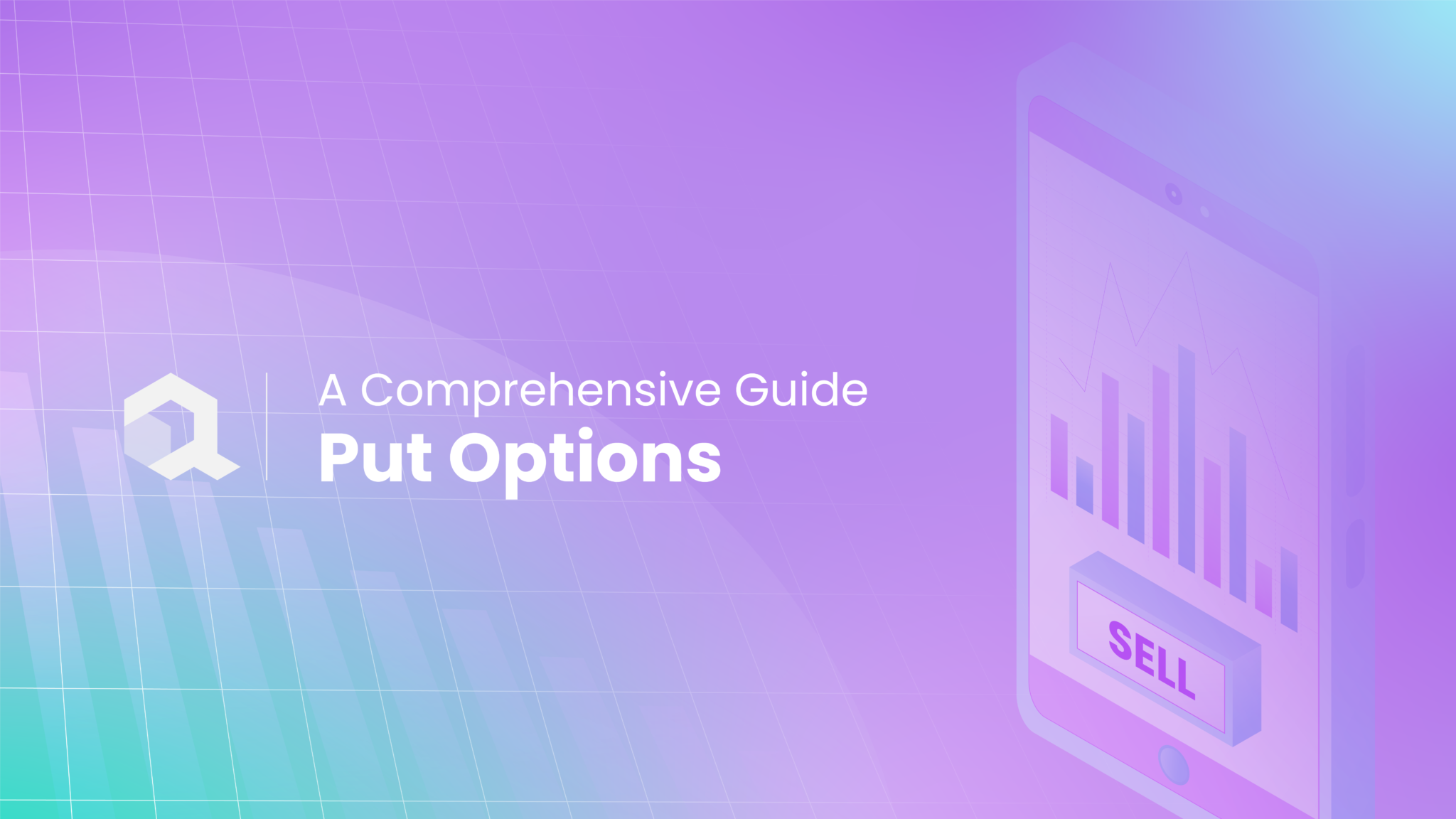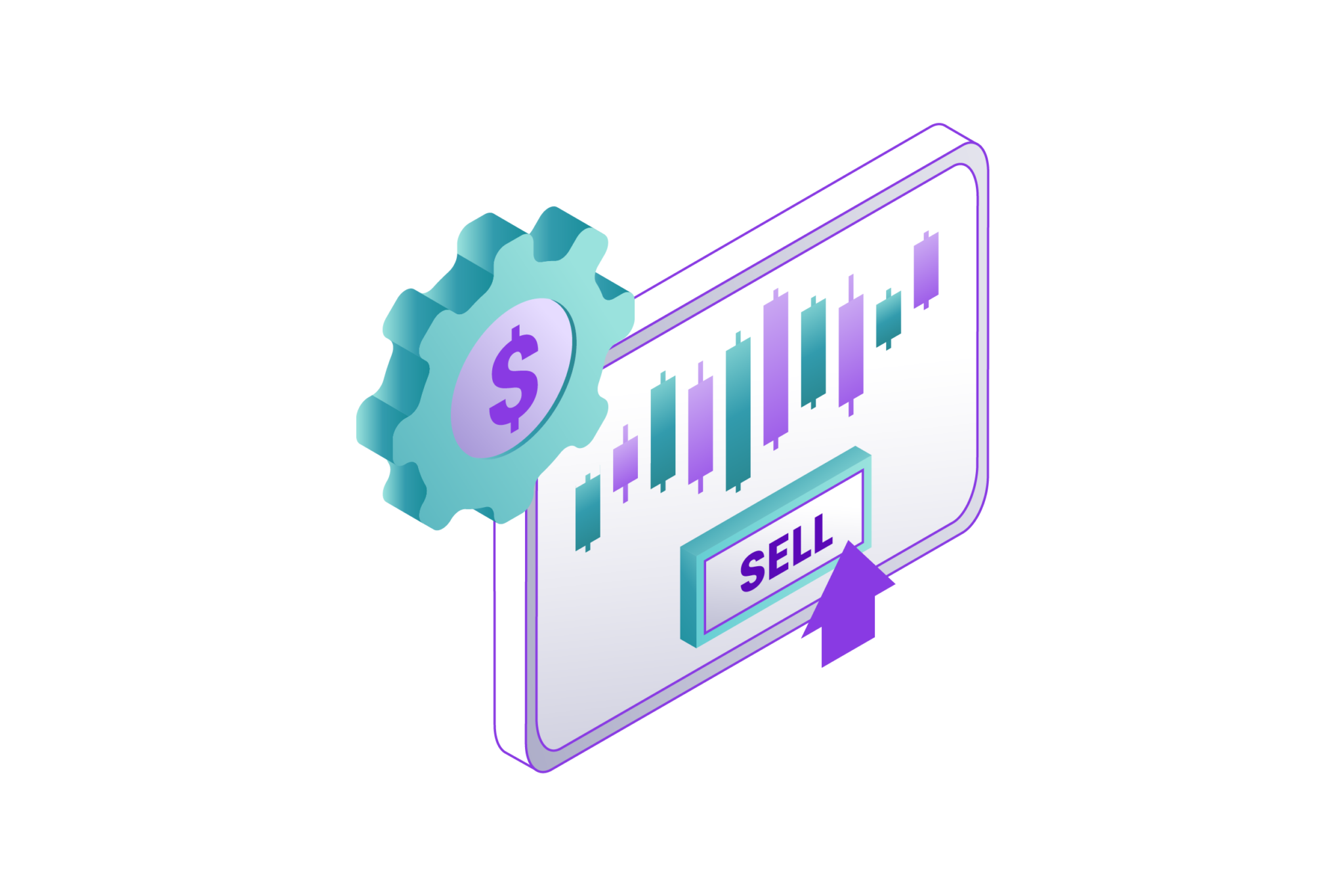
The idea of a put option might sound complicated when you first hear about it, but it’s actually a basic tool used in the world of finance for many different reasons. In simple terms, a put option is just an agreement that lets the person holding it decide if they want to sell a certain amount of something (like stocks) at a price they agree on before a certain time. This might sound straightforward, but there’s a lot more to put options that make them very useful for people who invest money. They can be used in many ways, like protecting against losing money or guessing which way the market will go. This article is going to make put options easier to understand. We’ll explain how they work, what you can do with them, and why they’re important for the financial world.
Put options are kind of like a safety net. They give you a choice to sell at a specific price, which can be a great way to avoid losing too much money if the market goes down. Imagine you’re holding onto something you think might lose value. If you have a put option, you can sell it at the price you agreed on earlier, even if the market price has dropped. This is a big reason why investors like put options – they can help reduce the risk of losing money.
Besides being a safety tool, put options are also used by investors who try to guess where the market will head next. If someone believes the price of something is going to go down, they might buy a put option. If they’re right, and the price does drop, they can make money from their prediction. This shows just how versatile put options can be, from protecting investments to making bets on market trends. As we dive deeper into how put options work, you’ll see how they play a key role in the financial world, offering different strategies for investors.
Mechanics of Put Options

Put options are a fundamental instrument in the financial markets, providing investors and traders with a strategic tool for managing risk or speculating on the price movements of various assets. At the core of put options are several essential elements: the strike price, expiration date, and premium. Each of these components plays a pivotal role in the functionality and value of a put option, influenced by the broader context of market dynamics such as asset price movements, time decay, and volatility.
Strike Price
The strike price, also known as the exercise price, is a critical component in options trading, defining the predetermined price at which an options contract holder can buy (call option) or sell (put option) the underlying asset. This price is central to the contract’s value and strategic execution, especially for put options, where the option becomes more valuable as the market price of the underlying asset drops below the strike price. In such scenarios, the holder gains the advantage of selling the asset at this higher, agreed-upon price, potentially securing a profit despite falling market prices. This mechanism provides a safety net against market volatility, allowing investors to manage risk and capitalize on market movements by strategically selecting options with strike prices aligned with their market outlook and risk tolerance.
The relationship between the strike price and the market price of the underlying asset is fundamental to determining the option’s intrinsic value and its attractiveness to the investor. For put options, the intrinsic value increases as the market price falls below the strike price, offering a protective cushion or a profit opportunity depending on the market’s direction. This dynamic underscores the importance of the strike price in options trading, influencing not only the potential financial outcomes but also the strategic decisions investors make when navigating the options market. By carefully considering the strike price in relation to expected market movements, investors can optimize their trading strategies to enhance gains or mitigate losses, making the strike price a key factor in the success of options trading endeavors.
Expiration Date
The expiration date in the context of options trading represents the definitive deadline by which the holder of an option must decide whether to exercise their right to buy or sell the underlying asset at the agreed-upon price. This critical date marks the point beyond which the option ceases to exist, rendering any potential for executing the trade null and void. The presence of an expiration date inherently introduces the concept of time decay into the valuation of options, particularly impacting put options. Time decay refers to the erosion of an option’s value as it draws closer to its expiration date, a phenomenon that accelerates as the date nears. This is because the chances of the market moving in a direction that would make exercising the option profitable diminish over time, especially if prevailing market conditions do not favor such an outcome.
Also Read: Stock Investing Futures: Strategies for Long-Term Success
Understanding and managing the implications of time decay is essential for traders, as it significantly influences the timing and strategic considerations of option trades. As the expiration date approaches, the value of an option may decrease if the market conditions do not align with the conditions under which exercising the option would be profitable. This decrease in value is particularly pronounced in environments where the market remains stagnant or moves opposite to the option holder’s interests, making the accurate prediction of market movements and the judicious selection of expiration dates paramount in options trading. Consequently, traders must meticulously evaluate their options’ expiration dates in relation to market forecasts and their own investment strategies to optimize the timing of their trades and maximize potential returns.
Premium
The premium in the world of options trading is essentially the cost that the buyer pays upfront to the seller to acquire the rights that the option grants. This payment is a pivotal element in the transaction, serving as the income for the option seller while representing an investment or a hedge against potential financial movements for the buyer. The amount of the premium is not arbitrary; it is carefully calculated to reflect the current market conditions, including the underlying asset’s price, volatility, and the option’s expiration date. Moreover, the premium encapsulates the perceived risk associated with the option as well as its time value—the potential for the option to become more valuable as market conditions change over time. This time value decreases as the option approaches its expiration date, a concept known as time decay, highlighting the temporal nature of the option’s worth.
For both parties involved, the premium is a critical financial consideration. For sellers, it represents the revenue they receive for selling the option, compensating them for the risk they undertake by agreeing to buy or sell the underlying asset if the buyer exercises the option. For buyers, the premium is the cost of obtaining the right (but not the obligation) to execute a trade at a predetermined price, offering a form of protection against adverse market movements or an opportunity to capitalize on favorable market conditions. This dual nature of the premium makes it a central aspect of options trading, influencing strategies and decisions on both sides of the transaction. Buyers must assess whether the potential benefits of holding the option justify the upfront cost, while sellers evaluate the premium against the risk of having to fulfill the option’s terms.
Market Dynamics Influencing Put Options
- Underlying Asset Price Movements: The value of put options is intrinsically linked to the price movements of the underlying asset. Significant declines in the asset’s market price can increase the value of a put option, as the option becomes a more attractive tool for selling the asset at the predetermined strike price.
- Time Decay: Time decay, or theta decay, refers to the reduction in the value of an option as it approaches its expiration date, assuming all other market conditions remain constant. This effect is particularly pronounced for options close to expiration, making the management of expiration dates a strategic component of options trading.
- Volatility: Volatility of the underlying asset is a key factor in determining the premium of a put option. Higher volatility increases the risk of price movement beyond the strike price, potentially enhancing the option’s value. Consequently, volatility is a double-edged sword, presenting both opportunities for profit and risks of loss.
Understanding these components and how they interact within the dynamic environment of the financial markets is essential for anyone looking to effectively navigate the options market. Mastery of put options mechanics allows investors and traders to leverage these instruments for hedging against potential downturns, speculating on future price movements, or enhancing portfolio returns through strategic option trades.
Uses of Put Options

Put options are versatile financial instruments that investors and traders use for various strategies, including hedging and speculation, among others. Here’s a broader context on their uses:
- Hedging: This is a risk management strategy used to offset potential losses in an investment portfolio. By purchasing put options, investors can secure the right to sell their holdings at a predetermined price, known as the strike price, before the option expires. This is particularly useful for investors holding stocks that they believe might decrease in value in the near future. For instance, if an investor owns shares of a company but fears that upcoming earnings reports or other market events might lead to a decrease in the stock’s price, they can buy a put option. If the stock’s price indeed falls below the strike price, the investor can exercise the option to sell at the higher, predetermined price, thus mitigating their losses.
- Speculation: Unlike hedging, speculation involves taking on risk with the expectation of achieving a financial gain. Speculators use put options to bet on the decline of a stock or other asset’s price. By buying a put option, a speculator gains the right to sell the underlying asset at the strike price before the option expires. If the asset’s price falls below the strike price, the speculator can buy the asset at the lower market price and sell it at the higher strike price, profiting from the difference. This strategy does not require the speculator to own the underlying asset beforehand, making it a popular choice for betting on price declines. However, this approach is riskier, as incorrect predictions can lead to the total loss of the option’s premium, the fee paid to purchase the option.
- Income Generation: Another use of put options is for income generation through the writing (selling) of put options. Investors who write put options receive the option premium from the buyer. If the stock stays above the strike price, the option will expire worthless, allowing the writer to keep the premium as profit. This strategy works well for investors who wish to acquire the underlying asset at a lower price while earning income. If the stock’s price falls below the strike price, the writer may be obligated to buy the stock at the strike price, which should be acceptable if they were willing to own the stock at that price.
- Portfolio Diversification: Put options can also be used as a tool for diversification. By incorporating options into a portfolio, investors can gain exposure to different market conditions and strategies. This can help reduce overall portfolio risk and improve potential returns.
- Strategic Combinations: Put options can be combined with other options or financial instruments to create complex trading strategies such as spreads, straddles, and collars. These strategies allow traders to tailor their market outlooks and risk profiles, offering protection against downside risk, capitalizing on market volatility, or securing profit margins.
Each of these uses highlights the flexibility of put options as tools for managing risk, speculating on price movements, generating income, diversifying portfolios, and executing sophisticated trading strategies. However, the effectiveness of these strategies depends on the investor’s understanding of options, market conditions, and the specific risks involved.
Implications of Put Options

The implications of put options and other derivative instruments in the financial markets are multifaceted and significant, touching on aspects of market functionality, economic stability, and potential vulnerabilities. These financial instruments, including put options, play a critical role in the financial ecosystem by offering avenues for risk management and price discovery. This is crucial for both individual investors and institutional market participants, as it allows them to hedge against potential losses in their investment portfolios or speculate on future price movements.
Positive Implications
- Risk Management: Put options provide a strategic tool for investors to protect themselves against potential downturns in the market. By purchasing a put option, an investor can lock in a sale price for an asset, mitigating the risk of a significant loss if the market price falls below this level. This hedging mechanism is vital for portfolio management and can help maintain market stability during volatile periods.
- Price Discovery: The use and pricing of put options contribute to the overall mechanism of price discovery in financial markets. They help in revealing information about future market expectations and the perceived risk of different assets. This is important for the efficient allocation of resources and capital within the economy, as it aids investors in making informed decisions based on the collective knowledge embedded in market prices.
Also Read: What Is a Hedge Fund? Strategies, Secrets, Risks, and Returns
Negative Implications
- Complexity and Leverage: The complexity of put options and other derivatives can be a double-edged sword. While they offer sophisticated strategies for risk management, their intricate nature may lead to misunderstandings and misapplications. Furthermore, the leverage associated with derivatives can magnify losses, turning relatively small market movements into significant financial impacts. This can be particularly perilous for entities that are highly leveraged or do not fully understand the products they are dealing with.
- Systemic Risks: The widespread use of derivatives can contribute to systemic risks within the financial system. As evidenced in past financial crises, such as the 2008 financial crisis, the interconnectivity of market participants through derivatives can lead to contagion effects, where the failure of one entity can trigger a cascade of failures across the market. This is especially concerning when derivatives are used in speculative ways that do not contribute to the real economy but instead pose risks to financial stability.
Historical Context
Historically, financial crises have often been exacerbated by the misuse or misunderstanding of derivative instruments. The collapse of Long-Term Capital Management (LTCM) in 1998 and the 2008 global financial crisis are notable examples where the opaque and complex nature of derivatives contributed to systemic failures. These events highlight the need for enhanced regulatory oversight, greater transparency, and improved financial literacy among market participants.
Given the dual nature of put options and derivatives—offering both beneficial tools for risk management and potential channels for systemic risk—it is imperative for policymakers, regulators, and market participants to have a deep understanding of these instruments. This includes not only their mechanisms and potential uses but also the broader implications for financial market stability and economic health. Balancing the benefits of derivatives with their inherent risks requires careful regulation, ongoing education, and the development of robust risk management practices.
Conclusion
Put options are more than just a financial instrument; they are a reflection of the complex interplay between risk, reward, and strategy that characterizes the financial markets. From their basic mechanics to their applications and implications, put options offer a window into the sophisticated operations of modern finance. For investors, understanding put options is not just about mastering a particular tool; it’s about gaining a deeper insight into the market’s dynamics and learning to navigate its uncertainties with confidence.
As the financial landscape continues to evolve, the role of put options and similar instruments will only grow, underscoring the importance of financial literacy in today’s economy. Whether for hedging, speculation, or strategic investment, put options represent a critical component of the market’s machinery, driving innovation and efficiency across the board. In the end, a well-informed approach to put options can enhance portfolio performance and contribute to a more robust financial system, benefiting everyone from individual investors to the global economy.
Disclaimer: The information provided by Quant Matter in this article is intended for general informational purposes and does not reflect the company’s opinion. It is not intended as investment advice or a recommendation. Readers are strongly advised to conduct their own thorough research and consult with a qualified financial advisor before making any financial decisions.

I'm Carina, a passionate crypto trader, analyst, and enthusiast. With years of experience in the thrilling world of cryptocurrency, I have dedicated my time to understanding the complexities and trends of this ever-evolving industry.
Through my expertise, I strive to empower individuals with the knowledge and tools they need to navigate the exciting realm of digital assets. Whether you're a seasoned investor or a curious beginner, I'm here to share valuable insights, practical tips, and comprehensive analyses to help you make informed decisions in the crypto space.
- Carinahttps://quantmatter.com/author/carina/
- Carinahttps://quantmatter.com/author/carina/
- Carinahttps://quantmatter.com/author/carina/
- Carinahttps://quantmatter.com/author/carina/
